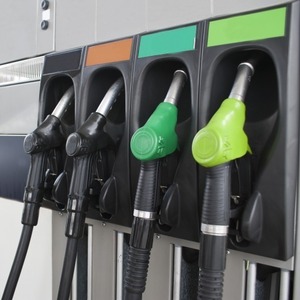FTC grants Gilbarco petition on flex fuel labeling requirements

December 6, 2016
BY Erin Krueger
On Nov. 29, the Federal Trade Commission announced it has granted Gilbarco Inc. and other ethanol flex fuel retailers a partial exemption to its Fuel Rating Rule labeling requirements. The exemption allows retailers to slightly reduce the required label size when disclosing the ethanol content of flex fuels on the fuel selection buttons on retail pumps.
According to the FTC, Gilbarco, a retail fuel pump manufacturer, petitioned the agency for the exemption. The FTC also noted it previously granted similar exemptions for octane labels placed on fuel selection buttons.
The decision was published in the Federal Register on Dec. 2. The Federal Register posting explains the FTC established a rule for the new ethanol flex fuel rating and label in January 2016. That rule became effective in mid-July. The rule details label color scheme, shape, size, textual content, and font type and point size. According to the FTC, ethanol flex fuel labels must be orange, rectangular, and measure 3 inches wide by 2.2 inches long. The percentage of ethanol content is require to be printed in orange font within a 1 inch-deep black band across the top of the label. Under the band, the label must state “Use Only in Flex Fuel Vehicles/May Harm Other Engines.”
In its petition, Gilbarco requested an exemption for smaller label dimensions, to include the word “press” on the label’s black band, and for dome-shaped button labels for certain dispenser designs.
Advertisement
A full copy of FTC’s notice is available on the Federal Register website.
Advertisement
Related Stories
Neste and DHL Express have strengthened their collaboration with the supply of 7,400 tons (9.5 million liters) of neat, i.e. unblended, Neste MY Sustainable Aviation Fuel to DHL Express at Singapore Changi Airport starting July 2025.
CoBank’s latest quarterly research report, released July 10, highlights current uncertainty around the implementation of three biofuel policies, RFS RVOs, small refinery exemptions (SREs) and the 45Z clean fuels production tax credit.
The U.S. Energy Information Administration maintained its forecast for 2025 and 2026 biodiesel, renewable diesel and sustainable aviation fuel (SAF) production in its latest Short-Term Energy Outlook, released July 8.
XCF Global Inc. on July 10 shared its strategic plan to invest close to $1 billion in developing a network of SAF production facilities, expanding its U.S. footprint, and advancing its international growth strategy.
U.S. fuel ethanol capacity fell slightly in April, while biodiesel and renewable diesel capacity held steady, according to data released by the U.S. EIA on June 30. Feedstock consumption was down when compared to the previous month.
Upcoming Events










